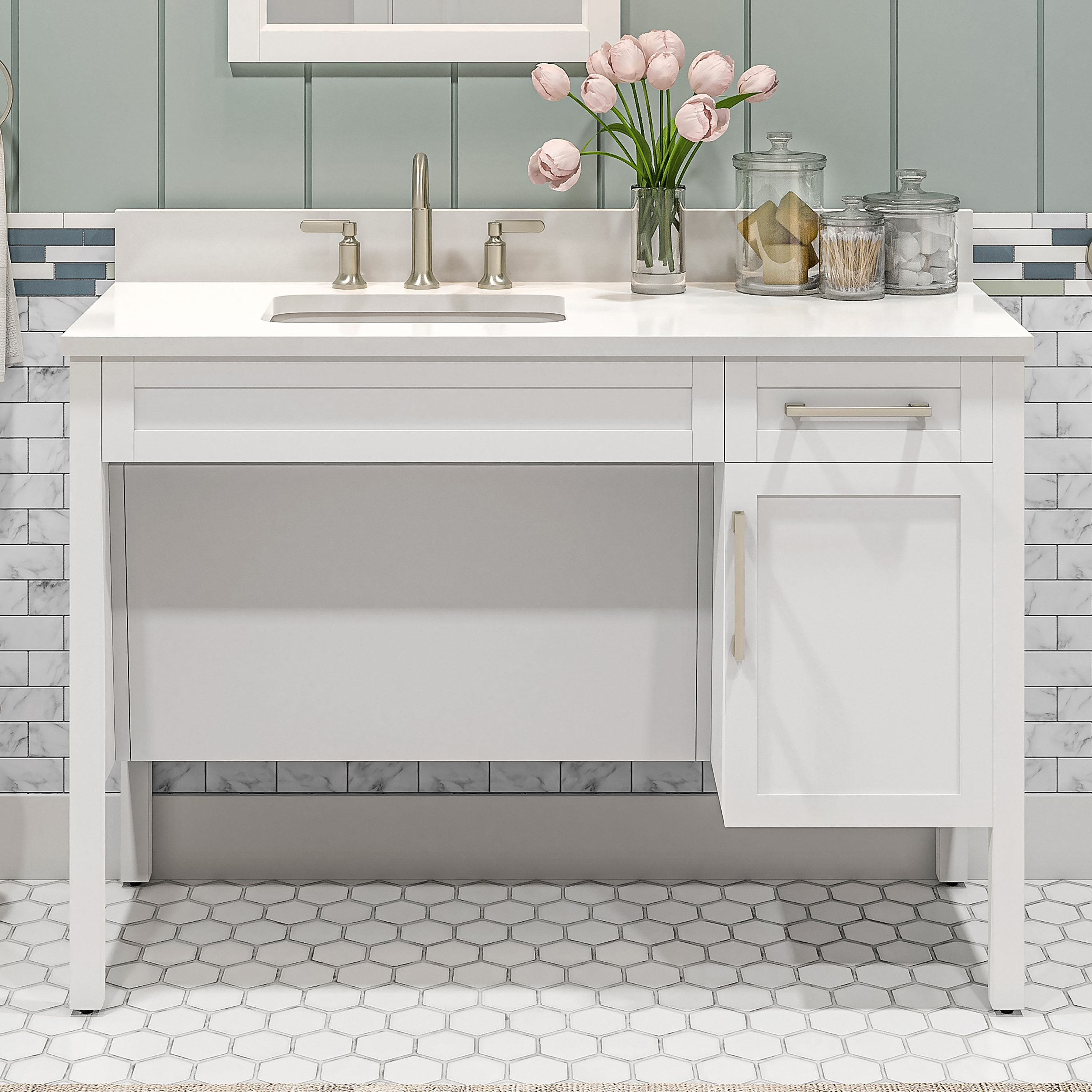ADA Compliant Bathroom Sink Design and Specifications

Ada compliant bathroom sink – Accessible bathroom design is crucial for individuals with disabilities to use and access bathroom facilities independently and safely. ADA-compliant bathroom sinks play a vital role in creating accessible and inclusive bathroom spaces. These sinks adhere to specific design and specification guidelines set forth by the Americans with Disabilities Act (ADA) to ensure accessibility and usability for individuals with mobility impairments.
An ADA compliant bathroom sink is designed to be accessible to individuals with disabilities. It typically features a lower height and a wider rim, making it easier to reach and use. If you need to remove the drain from an ADA compliant bathroom sink, follow these steps: how to remove bathroom sink drain.
Once the drain is removed, you can clean it or replace it as needed. An ADA compliant bathroom sink is an important part of making a bathroom accessible to everyone.
Design Specifications
ADA-compliant bathroom sinks must meet specific design specifications to ensure accessibility and usability. These specifications include:
- Height: The sink must be installed at a height between 29 and 34 inches from the floor to the top of the sink rim.
- Clearance: There must be a minimum of 27 inches of clear floor space in front of the sink to allow for wheelchair access.
- Knee Clearance: The space under the sink must provide at least 27 inches of knee clearance to allow for comfortable wheelchair use.
- Faucet Placement: The faucet must be located on the side of the sink, not in the center, to allow for easy access from a wheelchair.
- Materials: The sink and faucet must be made of durable and vandal-resistant materials to withstand frequent use.
Installation and Maintenance of ADA Compliant Bathroom Sinks
Proper installation and maintenance of ADA-compliant bathroom sinks are crucial for ensuring their functionality and longevity. This section provides a step-by-step guide to installing an ADA-compliant sink, discusses different mounting options, and shares tips for maintaining these sinks.
Installation, Ada compliant bathroom sink
- Prepare the mounting area: Ensure the wall or countertop where the sink will be mounted is level and can support the weight of the sink and fixtures.
- Install mounting brackets: For wall-mounted sinks, install the mounting brackets securely according to the manufacturer’s instructions.
- Place the sink: Carefully place the sink onto the mounting brackets or countertop and align it properly.
- Secure the sink: Use the provided hardware to tighten the sink to the mounting brackets or countertop, ensuring it is firmly secured.
- Install the faucet and drain: Connect the faucet and drain according to the manufacturer’s instructions, ensuring they are secure and leak-free.
- Check for leaks: Turn on the water supply and check for any leaks around the faucet, drain, or sink base.
Maintenance
- Regular cleaning: Use a mild, non-abrasive cleaner to clean the sink surface and fixtures regularly. Avoid using harsh chemicals that could damage the finish.
- Drain cleaning: Periodically clean the drain to prevent clogs. Use a drain cleaner or baking soda and vinegar to remove any buildup.
- Faucet maintenance: Check the faucet regularly for leaks and ensure the handles operate smoothly. Replace any worn or damaged parts as needed.
- Check for loose connections: Over time, connections can become loose. Periodically check the mounting brackets, faucet, and drain to ensure they are securely tightened.
Examples and Case Studies of ADA Compliant Bathroom Sinks

To illustrate the principles of ADA-compliant bathroom sink design, let’s explore some practical examples and case studies:
Example 1: Hospital Bathroom
A hospital bathroom features a sink with a roll-under design, allowing wheelchair users to access the sink easily. The sink has a lever handle that is easy to operate with one hand, and the faucet has a motion sensor that activates the water flow automatically.
Case Study: Accessible Bathroom for Seniors
A study conducted by a non-profit organization showed that installing ADA-compliant bathroom sinks in homes for seniors resulted in increased independence and reduced risk of falls. Seniors were able to use the sinks safely and comfortably, allowing them to maintain their dignity and quality of life.
Emerging Trends in ADA-compliant Bathroom Sink Design
The use of touchless technology is becoming increasingly popular in ADA-compliant bathroom sinks. Touchless faucets and soap dispensers eliminate the need for physical contact, making them more accessible for individuals with limited mobility or dexterity.
For those seeking an accessible bathroom experience, ADA compliant bathroom sinks are a thoughtful choice. These sinks often feature ample space for wheelchair access and easy-to-reach controls. To complement such sinks, wall mount bathroom sink faucets provide an ergonomic solution.
These faucets can be positioned at a comfortable height for users with limited mobility, ensuring convenient handwashing and hygiene maintenance. By combining an ADA compliant bathroom sink with a wall mount faucet, individuals can create a bathroom that seamlessly blends functionality and accessibility.
?$SectionHero$)